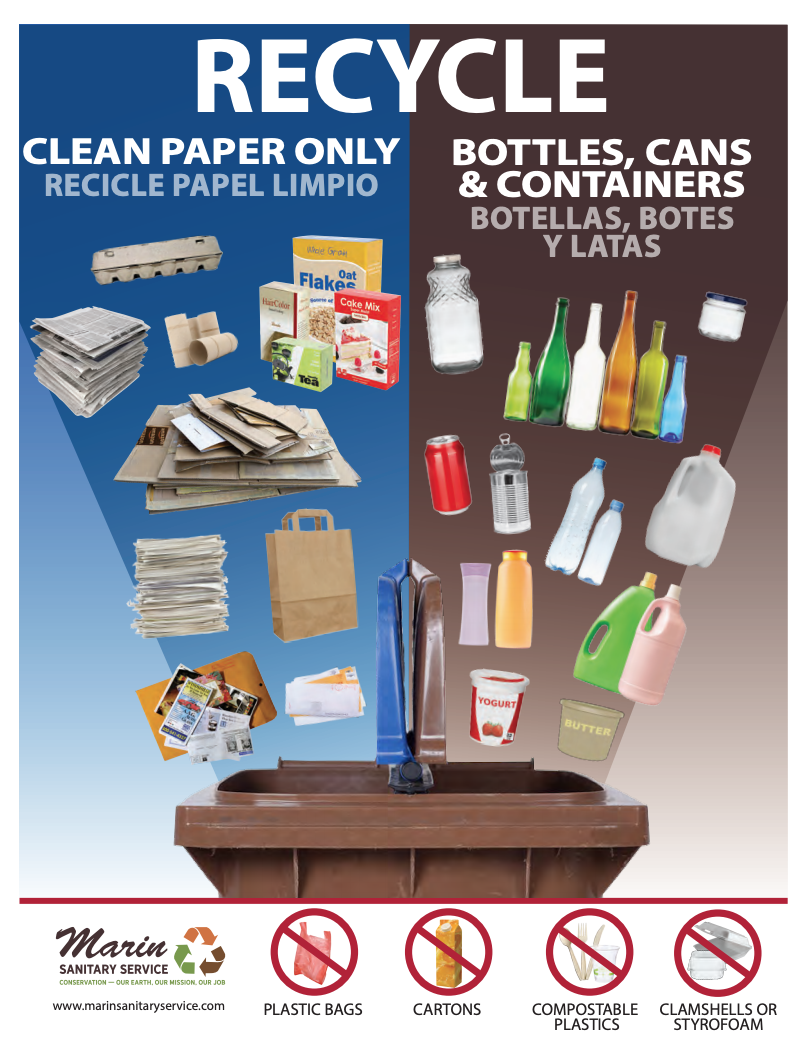4B NEED TO KNOW Waste Management
Top Tip: Knowing what really happens when you put something in the trash really helps understand WHY going plastic free is so important – here is more information.
You have completed 4A Waste Management Survey. Here is more information.
What happens to the waste next? Improving on-campus waste management
Recycling is a complicated and sometimes imperfect process of converting waste materials into new materials which ideally promotes the reduction of raw materials and limits energy use and pollution. But it has often been falsely heralded as the solution to plastic pollution. It is not that simple. Recycling is a hugely energy-intensive process and can still be very polluting.
It takes 75% less energy to make a plastic bottle from recycled plastic compared with using ‘virgin’ materials. Using a tonne of recycled plastic bottles (recycled PET or recycled HDPE) in new bottles saves around a tonne of CO2eq. Statistics from WRAP
Therefore, your efforts should be focused on first refusing and then reducing and reusing plastic, and then recycling
At many schools, a lack of understanding about why and how we separate waste can create cross-contamination of bins on campus.
If general unrecyclable waste gets mixed in with recyclable waste, it usually means (depending on the waste provider) that all the recyclables are contaminated and will all be classified as general waste. Therefore, it is important to only throw recyclables in the recycling bin to ensure everything gets recycled.
Here are some ideas to encourage better recycling practices on campus:
· Location of the bins on campus: make sure these are in areas of high “foot traffic” or near vending points.
· Better labelling on bins: make sure that it is absolutely clear what goes into each bin. This can be done with photos of commonly consumed items as well as items sold directly on campus. Source
· Bin Busters (either members of the EcoCrew or volunteers) can direct the flow of waste regularly to explain to people where waste goes and why.
· Regular bin audits to track the effectiveness of recycling and to identify areas high in contamination. These can also help with getting key data to communicate to the school community, e.g. “1 out of every 3 recycling bins was cross-contaminated with general waste”.
Reducing on-campus waste
|
SUP bottles for other drinks |
· Wholesale purchasing of juice to be sold by the glass in the cafeteria, or; · Fresh juice made in the cafeteria. · If the two above options are not possible, keep plastic bottles (which might be recyclable). Other mixed material items like juice boxes or tetra Pak are difficult to recycle and will go to general waste, likely for incineration. · Glass bottles with a deposit · Invest in a Sodastream for carbonated drinks with homemade syrups |
Requires vendors willing to sell wholesale or time to make fresh juice |
|
Single-use cups for drinking in the cafeteria (daily basis) |
· Purchase and use reusable glasses/mugs in the cafeteria, creating one central area where they are all placed for washing.
|
Requires in-house dishwashing capacity. |
|
Single-use cups for events |
· Create school-branded cups that can be used and washed at events |
See Module 5 on events for further strategy |
|
Plastic wrap for sandwiches |
· Place sandwiches under a cover for purchase and consumption on-campus. · If being taken to e.g. a lunch meeting, then encourage the use of a plate. · If being taken off campus, then provide a paper bag, wax paper, or offer wax wraps for sale that can be washed and reused (show how to make at home or in class) |
Requires bell jars or covers |
|
Condiments |
· Serve condiments in large tubs with pumps and skip all small plastic serving cups |
|
|
Shrink wrap for fresh-baked pastries |
· Serve pastries or other items free from shrink wrap |
|
|
Yoghurt containers |
· Purchase yoghurt wholesale and sell in a large container, allowing students and staff to serve themselves into small bowls and pay by weight. |
Requires vendors who will sell yoghurt wholesale |
|
Cups for hot drinks |
· Encourage reusable coffee cups/mugs, via discount and; · When phasing out, lower price of coffee by X% or amount (eg 5-10 cents) and then charge extra to those who use a disposable cup. This penalty fee has been shown to dramatically change behaviour bringing their own mugs. |
|
|
Coffee/tea pods or bags |
· Purchase loose leaf tea and make strainers available · Encourage filter coffee (bought loose) or use reusable pods if using a coffee machine |
|
|
Plastic stirrers |
· Do away with plastic stirrers and make reusable spoons available at hot drink points |
|
|
Plastic cutlery |
· Purchase and use reusable cutlery |
Requires an upfront initial investment but will pay off after a few months of use. |
|
Plastic dishes |
· Purchase and use reusable crockery |
